While many of us appreciate a dog with focus, especially when it comes to training, some dogs have a problem with too much focus. They will fixate on something until it becomes a reaction. For example, some dogs will stare at another dog walking by, which quickly becomes lunging and barking at the dog. For these dogs, we need to help them relax and learn to break their focus.
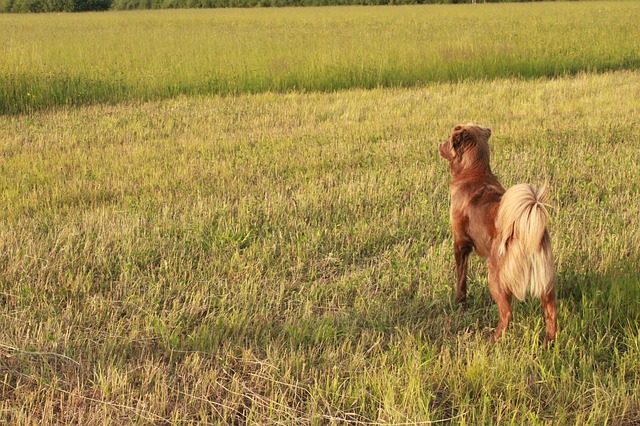
Why?
This will help your dog listen to you better in situations where he may become over-aroused (such as getting fixated on a bunny or another dog) and help him learn to relax. It can also help you with training – some dogs that fixate have a hard time moving from one behavior to the next.
Switching Focus
At first, you need to use something relatively easy – don’t start with trying to get your dog to stop staring at a running cat! Instead, start with toys. Most dogs that fixate do so with toys. This means that if your dog is playing with one toy and you introduce another, he won’t start playing with the new one, even if you throw it, move it around in front of him, etc.
To do this, play with him for a few seconds with one toy – it can be a tug, fetch, etc, doesn’t matter. Then, while the toy is in your control (that is, you have a grip on it), bring out the other toy. Hold the first toy still and wait for your dog to release it.
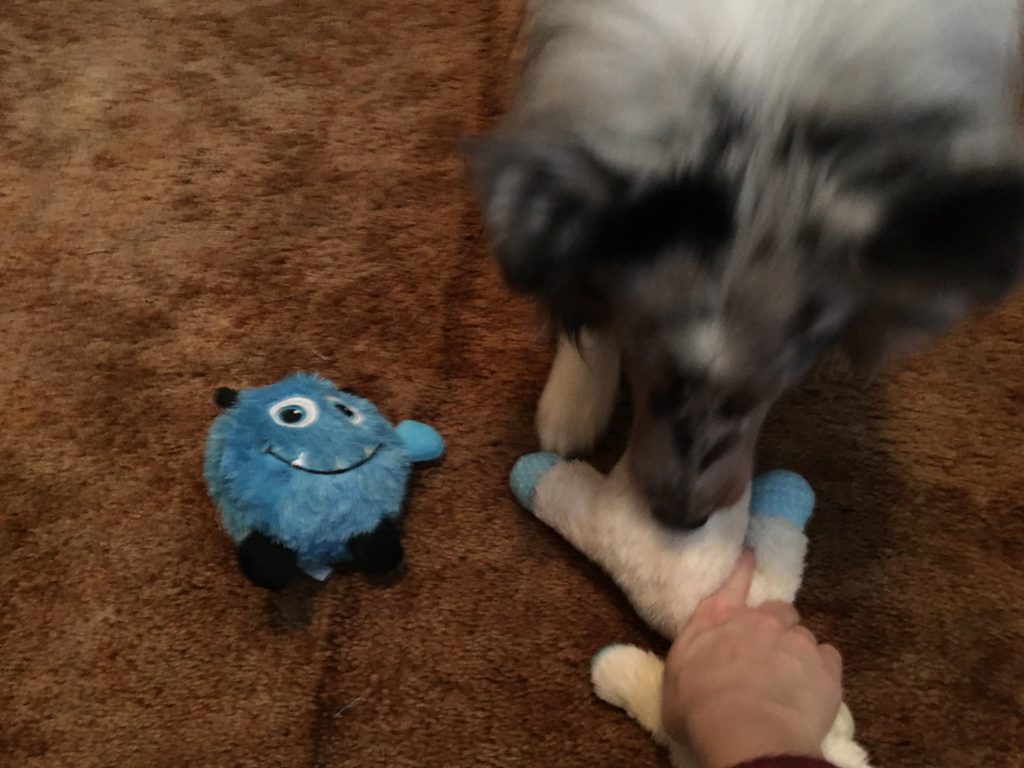
Now you wait. Depending on how bad of a “fixator” your dog is, this could take a couple seconds. It may take longer.
- If he hasn’t released after a few seconds, you can try moving the new toy around to see if it will get him to switch focus.
- You can also put the first toy behind your back, out of sight, to make it easier for him.
The Reward
When your dog finally starts to play with the new toy, reward him enthusiastically and give lots of praise for switching his focus. Then, he gets to play with the first toy again.
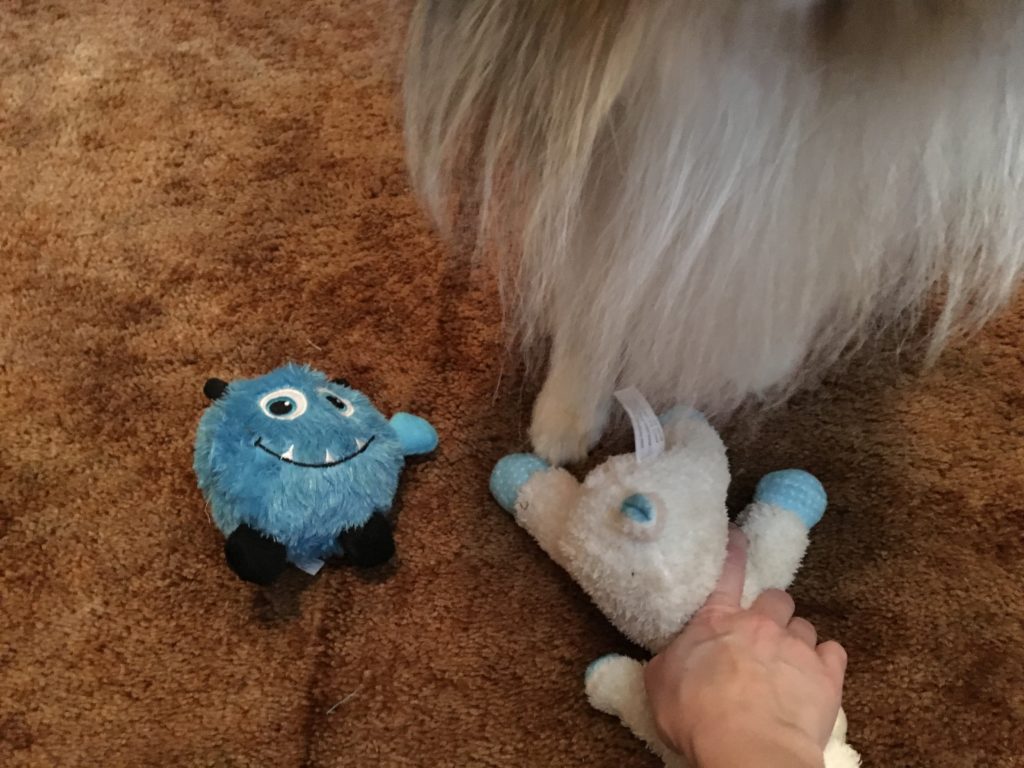
Some dogs may look up at you, unfazed by the “fixation.” That’s great. He stopped focusing on the toy and is looking at you. You can reward him by picking up the second toy and playing.
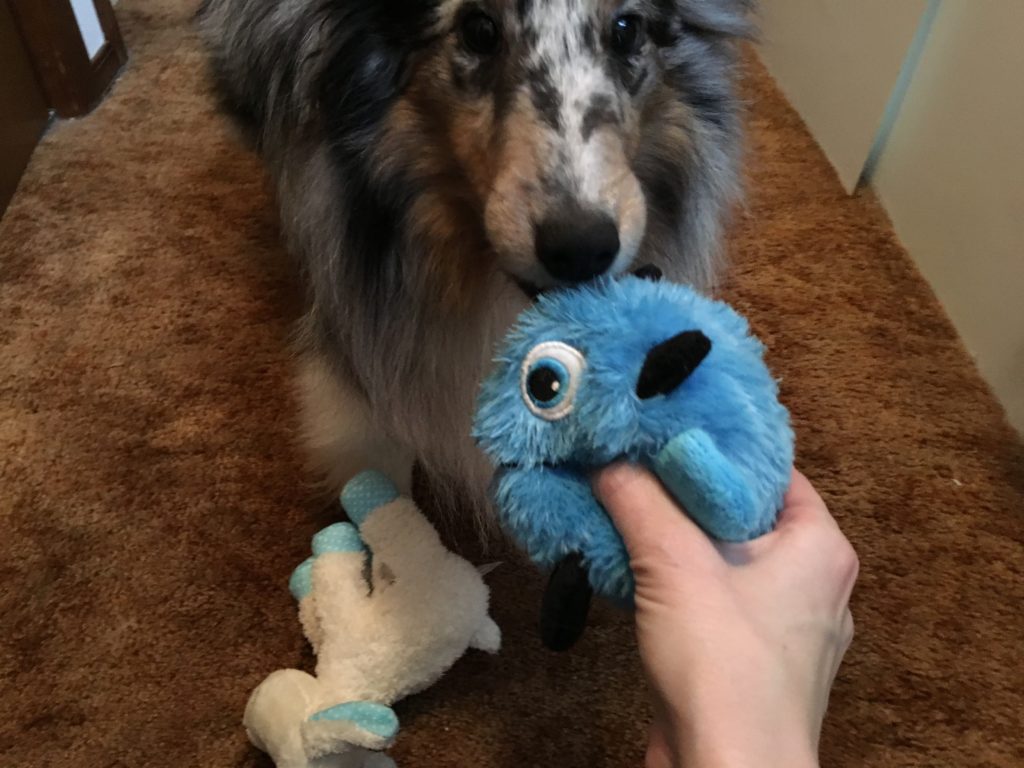
Putting it on cue
Once your dog is moving freely between toys, start saying a word — “switch,” “look” or whatever you want — as he switches from one toy to the other.
Note: This is different from the “leave it” cue because in this case, your dog may or may not have been interacting with the item you now want him to stop focusing on. In addition, having a cue like this can help your dog realize that you do not want him to return to fixating on the other object. This is especially important for dogs that fixate on other dogs, etc.
As you build upon this training, you can switch your dog’s attention from something you don’t want him staring at – say, the neighbor’s dog as it walks by – to something you do want him to focus on, whether it’s you, a toy, or what have you.
Then, use only one toy and play with your dog. Stop and wait for him to stop fixating on the toy and to look at you. For this, don’t put the toy behind your back – you don’t want your dog to focus on getting the toy, but rather, to re-focus on you. Be ready for your dog to display frustration or demand barking, digging, etc.
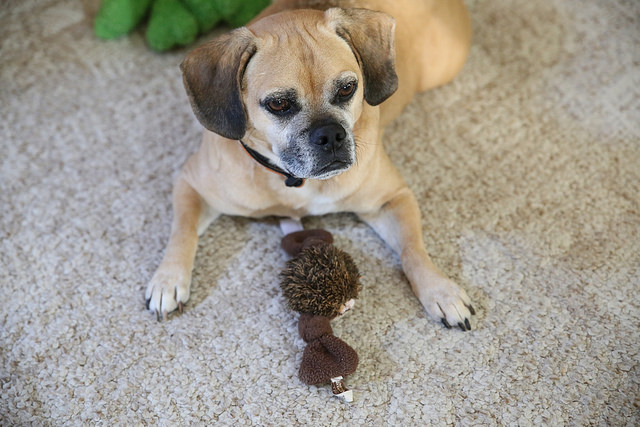
Keep practicing until your dog looks up at you, quietly and calmly, immediately after you stop playing with the toy. At that point, see if he can obey a few cues such as sit or down and then resume play. This also helps your dog build focus in his mind – the ability to go from a high-energy game to a quiet cue.
Fixating On Something Good (YOU!!)
Often dogs fixate on things that over-arouse, which means it’s probably something they shouldn’t fixate on. We start with toys because it’s easy, but eventually we want our dogs to not fixate on things like people, dogs, cats, etc.
You can also help your dog by teaching him that it’s okay to fixate on you. You can do this many ways:
- Teach your dog a “watch me” or “look at me” cue which means to give extended eye contact.
- Treat your dog every time he offers to give you eye contact on his own.
- Teach your dog a cue that means to “fixate” on your hand while on a walk. (I knew someone with a reactive dog that did this and it worked great for getting him through crowds. Basically, it’s an extended nose touch.)
- Teach your dog to look at the thing he wants to fixate on and then look back at you to be rewarded (called an “auto look”).
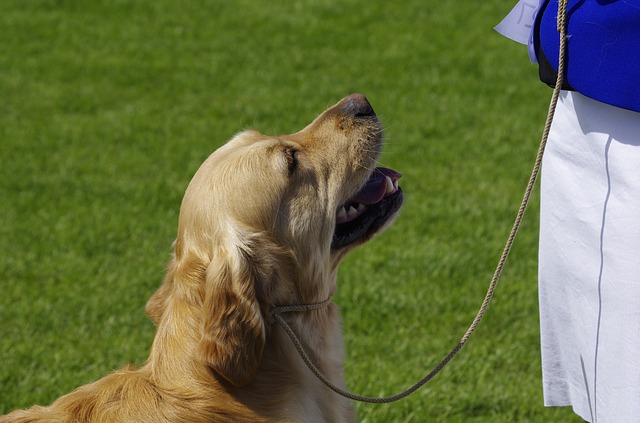
You may find a combination of these works well, and that way you and your dog have options depending on the situation. Remember, some things your dog fixates on will be harder for him to turn away from him. Distancing him from the item will also make a switching focus less difficult. Just keep practicing, and he’ll build his focus!
